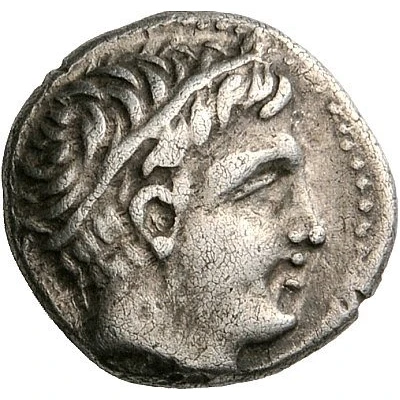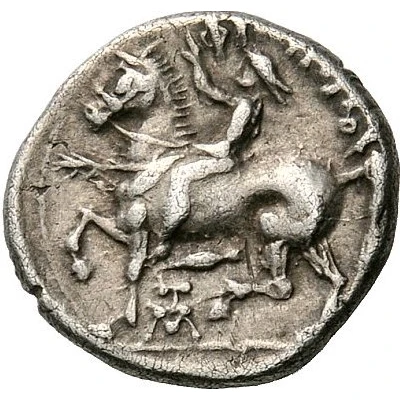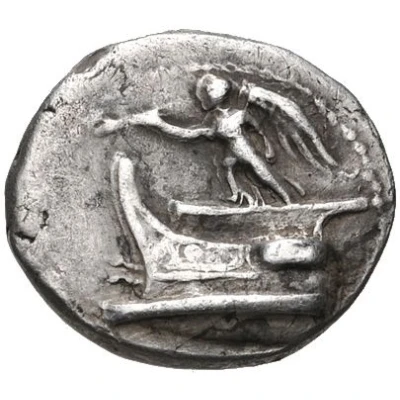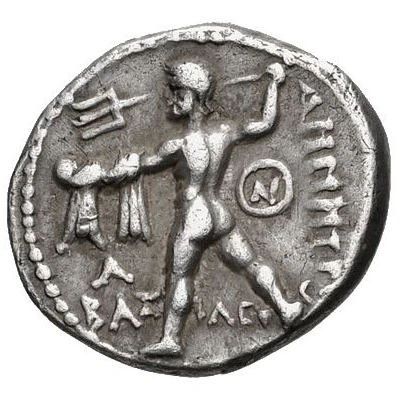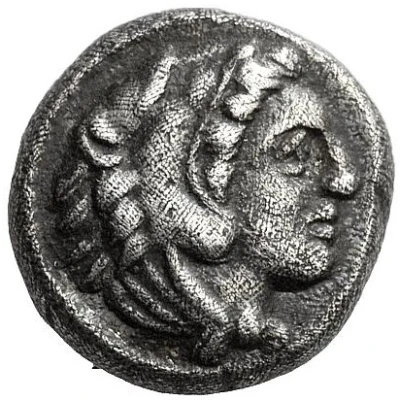
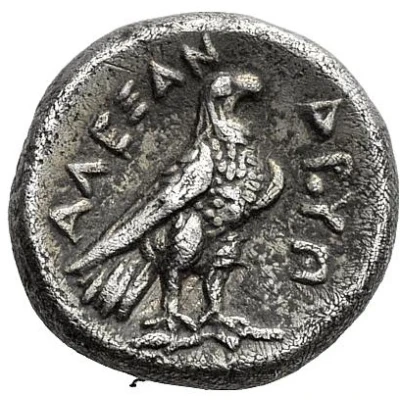

© Nomos AG
Hemidrachm In the name of Alexander III; Amphipolis 323 BC - 320 BC
| Silver | 2.08 g | 14 mm |
| Issuer | Kingdom of Macedonia |
|---|---|
| King | Philip III Arrhidaeus (323 BC - 317 BC) |
| Regent | Antipater (321 BC - 319 BC) |
| Type | Standard circulation coin |
| Years | 323 BC - 320 BC |
| Value | Hemidrachm (½) |
| Currency | Drachm |
| Composition | Silver |
| Weight | 2.08 g |
| Diameter | 14 mm |
| Shape | Round (irregular) |
| Technique | Hammered |
| Orientation | Variable alignment ↺ |
| Demonetized | Yes |
| Updated | 2024-10-10 |
| Numista | N#185091 |
|---|---|
| Rarity index | 100% |
Reverse
Eagle with closed wings standing right on thunderbolt. To right, at end of legend, Π enclosing a dot
Script: Greek
Lettering:
ΑΛΕΞΑΝΔΡΟΥ
ΠO
Translation: Alexander (III, the Great)
Comment
Nomos describes this as a variant of Price 150, with the extra letter in the legend, N encirclling a dot (Perhaps NO).They also say it is an early posthumous issue from Amphipolis or Aegae.
https://www.acsearch.info/search.html?id=1581167
Interesting fact
The Hemidrachm coin was used during the reign of Alexander the Great's son, Alexander III, and it features an image of the goddess Athena on one side and an image of Alexander the Great on the other. This coin was used as a means of payment and trade throughout the Kingdom of Macedonia and other parts of the ancient Greek world. It's interesting to note that the coin's design and imagery reflect the cultural and political influences of the time, and it provides a glimpse into the economic and social practices of ancient civilizations.
